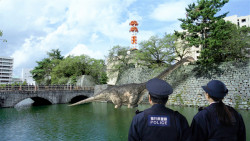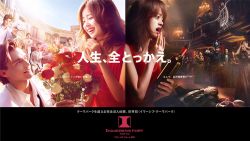
Originally published on metropolis.co.jp on May 2013

No artist reflects the optimistic mood of spring better than Czech artist Alphonse Mucha, whose art and life is the focus of an impressive exhibition at the Mori Arts Center Gallery.
Mucha provokes the image of flowery maidens, long hair and loose dresses entwining with flowers and stylized foliage. You might even imagine a glass of champagne woven into the design. This exhibition has plenty of that.
The Czech decorative artist epitomizes the Art Nouveau movement, an artistic style that sought inspiration in nature, expressed itself through sinuous, curvy lines; and idealized the feminine in a way that now seems at odds with the more androgynous zeitgeist of the present. Often the female figure is elevated to a symbolic “goddess,” personifying seasons, qualities, or even precious stones.
This ability to symbolize and tastefully sexualize also made Art Nouveau, especially in Mucha’s hands, the perfect medium for advertising. You couldn’t imagine Cubism or Abstract Expressionism being used to advertise biscuits or bicycles quite as effectively—and attractively—as the posters doing exactly that at this exhibition.
While some of the more commercial efforts may look a tad tacky, the posters Mucha created for the theater transcend mere advertising to become works of high art. The best of these are dedicated to the artist’s muse, the actress Sarah Bernhardt, an international superstar around the turn of the last century who is shown here in a variety of her famous thespian roles.
With the full cooperation of the Mucha family, this exhibition is not a mere attempt to cash in on a much-loved name, but takes a serious, in-depth look at the artist—backed up by many of his best works. The show includes drawings, oil paintings and hand-painted poster designs, as well as contemporary prints, many of them of a size and complexity that testifies to the skill of the print art of the period.
One of the reasons Mucha is popular in Japan is that the linear quality and love of nature have obvious affinities with ukiyo-e woodblock-print art. Sometimes these attempts to link late 19th-century European art to the Japanese tradition can become tedious—but luckily this exhibition hardly goes there.
Instead it looks at Mucha’s working methods, including photographs of nude models, revealing perhaps how he got those femininely evocative lines so correct. The exhibition also looks deeply into the artist’s love of Slavic nationalism and myth. This, with its deification of nature, is a more pertinent source of inspiration than anything from Japan.
Mucha’s career was a precursor for Czech independence, an event that came to pass in his lifetime. This clearly inspired him to go beyond the effervescent art of his youth to create works of sweeping emotion for his “Slav Epic Cycle” (1910-28), represented here by several large studies. This show reveals that there is much more to Mucha than flowery maidens in diaphanous dresses—although there’s nothing wrong with that either.







